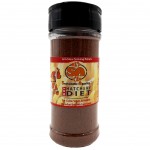SA Tomato Clownfish
- Species Information
- Scientific Name:Amphiprion frenatus
- Family:Pomacentridae
- Origin:Captive Bred
- Temperament:Semi-aggressive
- Maximum Size:5.5"
- Ideal Tank Size:>30 Gallons

The Tomato Clownfish (Amphiprion frenatus, Brevoort 1856), similar to the Clark’s Anemonefish (Amphiprion clarkii), has a large distribution in the wild compared to many species with a more localized distribution. Tomato clowns are generally found in shallow lagoon areas less than 12 feet deep. It is a popular aquarium fish due to its bright color and durability in the home aquarium. Their large size makes them well-suited to more aggressive community or “predator” aquariums. Tomatoes are aggressive feeders and will accept most aquarium foods, especially meaty seafood and omnivore preparations to mimic their wild diet, which is composed principally of small invertebrates, copepods, planktonic organisms, and algae. After hatching from the egg and growing through metamorphosis, juvenile tomato clowns develop three white stripes, which disappear as they age and mature, leaving only a single white head bar in adults.
Physical Description- Tomato clowns generally have a bright red face, belly, and fins and a single white head stripe in adults. The sides of tomato clowns can darken with age in some varieties. The white bar has a distinctive black outline that distinguishes this species from the similar Amphiprion rubrocinctus from northwestern Australia. The cinnamon clownfish (Amphiprion melanopus) is also similar, but specimens from most areas have black pelvic and anal fins. Since the geography of these similar species do not overlap, knowing the original collection location can be helpful in identifying species, especially in juveniles with undeveloped colors.
Temperament- Tomato clowns are very territorial and aggressive to defend their immediate territory from intruders but will coexist peacefully with other non-clown species that are similar or larger in size. In larger aquariums, smaller fish will be able to avoid the territory claimed by the tomato clown.
Size: Grows to 5.5”
Anemone Preference- In the ocean, Tomato clownfish are found living in association with only one species of anemone: the Bubble-tip sea anemones (Entacmaea quadricolor). Although an anemone isn’t necessary for the healthy captive care or breeding of the tomato clown, the bubble tip anemones are relatively easy to keep in the aquarium and are available in several color varieties, making a pair of tomato clownfish with their host anemone an excellent choice for an aquarium display with moderate lighting and water movement.
 Diet– Tomatoes are aggressive feeders and will accept most aquarium foods, especially meaty seafood and omnivore preparations to mimic their wild diet, which is composed principally of small invertebrates, copepods, planktonic organisms, and algae.
Diet– Tomatoes are aggressive feeders and will accept most aquarium foods, especially meaty seafood and omnivore preparations to mimic their wild diet, which is composed principally of small invertebrates, copepods, planktonic organisms, and algae.
Distribution- In the wild, tomato clownfish can be found from Southern Japan in the north of their territory to the South China Sea and surrounding islands (Malaysia, Philippines, and Taiwan).
Thank you for stopping by and checking out our website! Sustainable Aquatics is an ornamental marine and freshwater fish hatchery, located in Jefferson City, Tennessee. Sustainable Aquatics’ history and mission are to serve all its constituents; customers, partners, vendors, employees, suppliers, the environment, and future generations by advancing processes and practices that benefit all and make things a bit better in quality, service, delivery, and value.
We would love to have you follow us on Facebook!






